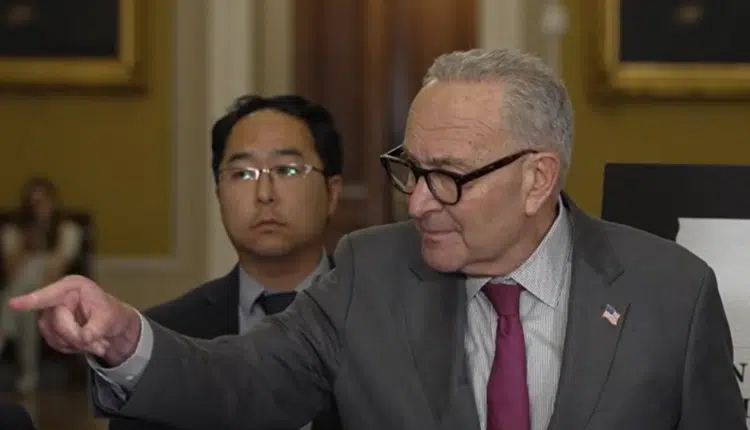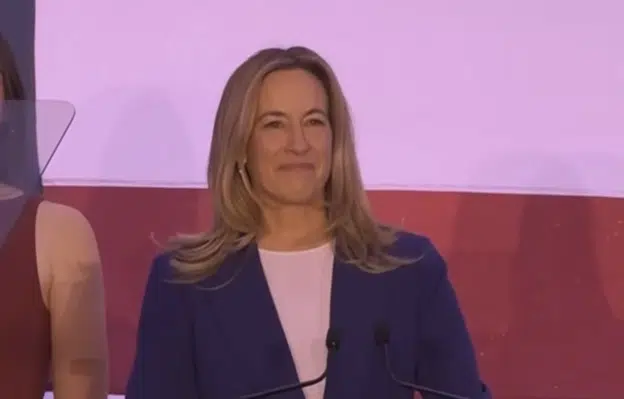By Robert Romano –
The big-spending politicians in Washington cannot say they were not warned.
As the financial system was brought to its knees in 2008, a torrent of government spending, borrowing, and money-printing was unleashed by Congress, the Treasury, and the Federal Reserve.
First, Fannie Mae and Freddie Mac were nationalized, which has already cost taxpayers more than $150 billion. Bear Stearns and AIG got their $210 billion. The $700 billion Troubled Asset Relief Program followed, but quickly abandoned its mission of purchasing devalued mortgage-backed securities (MBS), instead deferring to the Fed, which printed $1.25 trillion out of thin air to buy the Government Sponsored Enterprise paper. GM and Chrysler too got their bailouts totaling $80 billion.
Then, when Barack Obama took office, the $821 billion “stimulus” spending bill was enacted, and the Fed began expanding its U.S. treasuries holdings, first by $300 billion.
All told, it was a gargantuan, unprecedented $3.5 trillion expansion of government.
At the time, critics, including Americans for Limited Government (ALG), predicted that once the economy began to move again, strong inflation would follow, weakening the recovery. In “The Sky’s the Limit,” published on Jan. 14, 2009, I wrote, “the prediction is not for instant inflation, but that once market-based thawing does apparently begin to ensue, and all the excessive liquidity finds its way into the marketplace, demand will spike in one area or another and thus so will prices. There will be another asset bubble. And then the politicians will dutifully declare that the ‘recovery’ has ensued.”
Fast forward two years, add into the mix the Fed’s $600 billion QE2, ObamaCare, the Dodd-Frank financial takeover bill, and over $2 trillion in new government debt since Obama’s first budget was adopted, and the seeds of inflation have not only been planted, but watered and fertilized. The Fed’s share of the national debt has soared, from $475 billion in Jan. 2009 to more than $1.2 trillion today. That now makes the central bank the number one lender to the U.S. government in the world, more than China or Japan.
Overall, the Fed’s total balance sheet has expanded from $896 billion in Aug. 2007 when its latest round of quantitative easing began, to over $2.5 trillion today, a 187 percent increase.
Now, prices are following suit. After a huge surge in oil in 2008, which saw the price of a barrel of oil peak at nearly $150 in July 2008, right before the financial crisis of September, it is now mounting a comeback. It has risen from a low of $33 in Jan. 2009 to nearly $100 a barrel today, a 200 percent increase. Gold has risen from a low of about $820 an ounce at that time to over $1,400 now, a 70 percent increase.
The Food and Agricultural Organization (FAO) price index too has risen, from its Feb. 2009 low 141.2 to an all-time high of 230.7 in FAO’s latest release, a 63 percent increase. Its previous high came in Jul. 2008 when it hit 220.8. Then, the high costs of food had sparked food riots throughout the Third World.
Today, high food prices have toppled the governments of Tunisia and Egypt — both revolutions started in part as food price protests — and have set off a wave of civil unrest throughout the Arab world.
CNBC host Larry Kudlow explains the problem: “Commodities are priced in dollars, and the Federal Reserve has been overproducing dollars for more than two years. Consequently, emerging markets throughout the world — and the food sector in particular — are suffering from rising inflation.”
The Wall Street Journal, too, lays rising energy inflation at Ben Bernanke’s doorstep: “The Fed absolves itself of any responsibility for rising oil prices, attributing them to rising demand from a recovering global economy. Demand has been rising, but not enough to explain what has been a nearly across-the-board spike in prices for dollar-traded commodities.”
The Journal continues, “A spike in one or two commodities can be explained by a change in relative demand. A uniform price spike suggests at least in part a monetary explanation. The Fed will use the Libya turmoil as another alibi, but there’s no doubt in our mind[s] that oil prices include a substantial Ben Bernanke premium.” Indeed.
Clearly, with broad-based, substantial price increases across food, energy, and metals, inflation has regained considerable momentum. It’s even showing up in the Producer Price Index (PPI), which measures the cost of raw materials to our nation’s private sector job creators. All three groupings, Finished Goods, Intermediate Materials, and Crude Materials have risen from 170.1, 169.8, and 160.3 respectively in Feb. 2009 to 184.4, 190.1, and 234.1 today.
With prices rising this fast, is it any wonder that unemployment remains persistently high? Every single day, the cost of doing business is going up. That’s going to hurt job creation and squeeze profit margins, and if it continues unabated this year, will stall the entire recovery — as was readily predicted over two years ago to anyone who would listen.
Of course, the price increases are all by design. It’s what Keynesian deficit-spending and expansive money printing is supposed to achieve. But now it is risking another economic slowdown or even a recession if oil prices get too high again.
The only question now is if Washington, D.C. will do just a little self-examination, see the direct correlation between government policies and inflation, and for the first time in a generation make a much-needed adjustment. We need to stop spending, stop printing money, and stabilize the dollar once and for all — before it is too late and the economy goes off the rails again.
Robert Romano is the Senior Editor of Americans for Limited Government.






